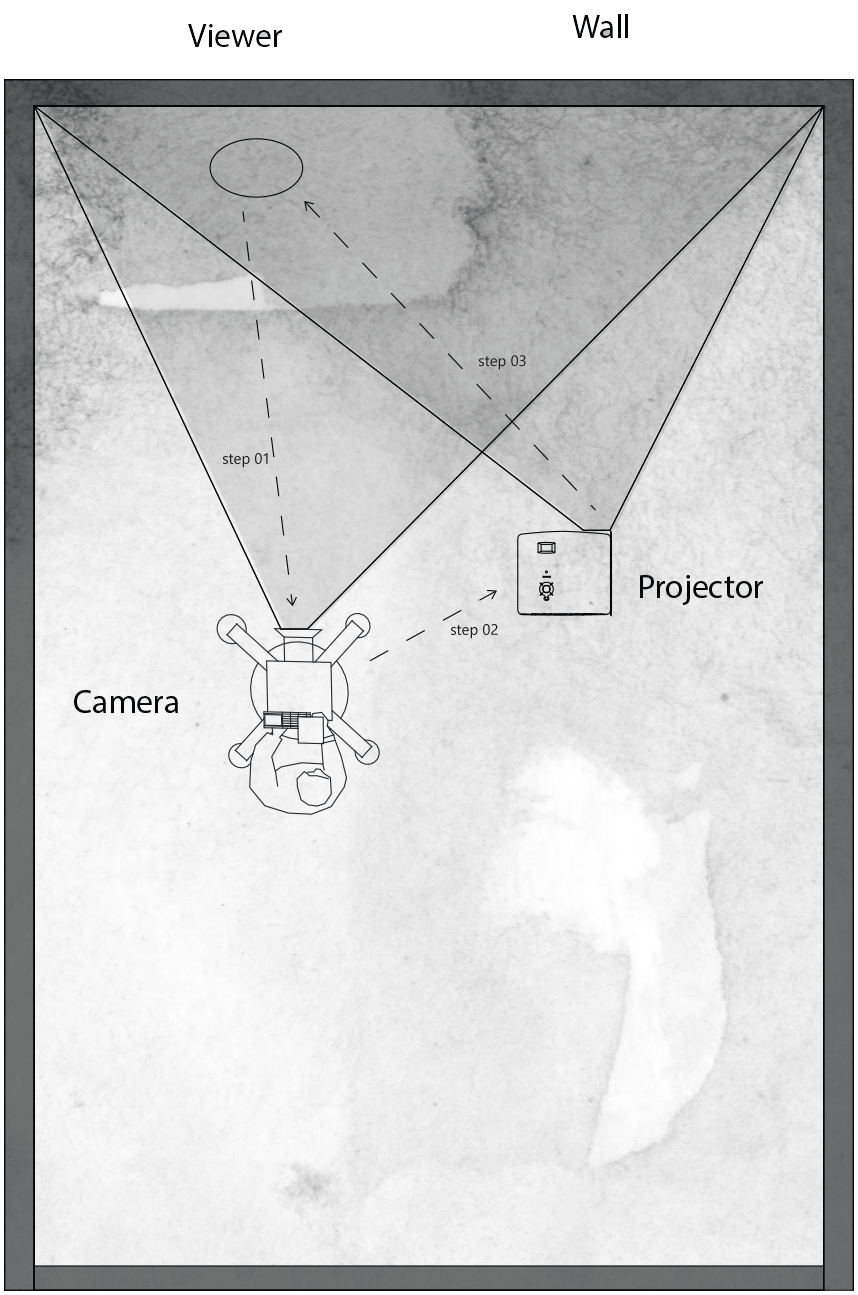


Infinity Space
Affected by Bruce Nauman “Corridor”, Peter Campus “shadow Projection”, and Dan Graham “present continuous past(s)”. I tried to experiment with basic installation of infinite loop with camera and projection.
With a number of clips from experiment, I edited the video on the purpose to show the relation between virtual images created within loop and the body in reality. The figure as an image projected onto surface or reflected on the mirror is taken as a part of the body in reality. Then, replacement and duplication occurs as a way of expanding the image of body into virtual loop.
Syracuse University
Advanced Art Video
Instructor Boryana Rossa
2016 Spring
Closed Circuit Projection Installation
This diagram shows the basic idea of creating a loop with camera and projector. First, light reflected on objector is captured by camera. (step 01) Then, the image is transmitted to projector through cable.(step 02) This image is projected on the wall, where the viewer is standing. (step 03) This is one cycle of the loop. Basically, importing the image then, exported again. Then, the images is again imported to camera (step 04). But the images that is captured by camera at step 04 is not the same anymore with the imported image of step 01. As the image at step 04 includes what has been projected on the wall. And this delays slightly and creates a frame of image, what was just present.

Loop Principle Diagram
Virtual space within loop Rhythm by camera works
By controlling the movement of the camera and the speed of the camera works, creating virtual space within infinite loop on the wall is possible. Also, viewers can create the rhythm in between each frames of loop by responsing to what is projected on the wall at that moment. The virtual projected image moves from near frame to deep frame as time goes.
This live feedback is what enable the viewers to create rhythm with. two basic camerawork is exploited. Zoom and tilting. Zoom in and out changes the scale of the image and cut out the edges. Tilting rotates the images around the center point with angle, creating a pattern of images.
What is creating a rhythm is rhythm of transitions of these options. As the past goes deeply into the frame, changes that occured at near past can not immediately affect the deeper frames. Those images are left on the wall, inviting viewers to react to it.
This two experiments develops different forms of virtual space within loop. Figure 01 shows continously zoomed out image, tilted about 60’. Compared to Figure 01, 02 shows larger space , tilted to opposite angle.
Figures from left to right, divides linear form of virtual space more times. creating smother movements of more frames. This is possible as the speed of the camera works changes the amount of time it takes for one cycle of loop.










